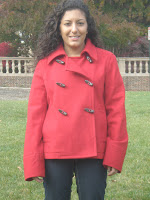Thursday, November 20, 2008
The three most imortant rules for a journalist to follow
Monday, November 17, 2008
Towson's efforts to go green
Friday, November 7, 2008
What audio can add to a story
Monday, November 3, 2008
Picture Time: Mugshots and More


 Towson students embrace the fall winds while walking through campus.
Towson students embrace the fall winds while walking through campus.
As a journalist, it is important to be able to take your own pictures and take them well. One way to take better pictures is to check for the right lighting, you don't want it to be too bright or so dark that you can't see the object in the picture. To make sure your lighting is right, you can use your hand and circle around to check where the light is best. Also, be sure there are no objects, such as trees in the background that look like they are sticking out of some one's head. Another way to take a better picture is to fill the frame; get in close. This way the viewer has a better understanding and appreciation of your scale. Finally, try to catch expected events or use alternate angles to make a shot more interesting.